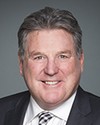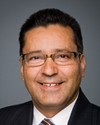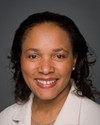Thanks very much. I'll work hard to stay under five minutes. Thanks for the opportunity to appear before the committee.
I'd first like to say we agree with the good parts of your last report that was issued last year, particularly as referenced by Jennifer Steeves where she talks about the importance of skills training upgrading and more access to student training and job seekers for Canadian growth. I would add, though, and I think we would all agree, that an important part of that solution must be the development of skilled workers from the aboriginal labour pool.
You may know we are proposing a $5.4 billion expansion of our Trans Mountain pipeline from Edmonton to Burnaby. As part of the project, we're actively engaged with aboriginal communities that are impacted by the project. We know that a key for our success and the success of the industry is accessing the skills and abilities of the people living in the communities we are affecting.
We also know the aboriginal population is primarily under the age of 24. We need these people to be active contributors to our project and to the economy.
The growth rate of the aboriginal population can have a positive impact on the overall workforce, and we need to work together with government for an active program of development in the areas of education and training.
I might note that the recent Doug Eyford report to the Prime Minister listed a number of oil and natural gas projects which, if approved, will exacerbate the shortage of skilled labour available to execute on these projects.
While talking to aboriginal communities, we have often heard that training and long-term employment are of primary importance to them. We have also heard about some of the barriers to obtaining and maintaining employment that aboriginal peoples experience. There's the lack of high school completion, lack of scholarships and difficulty in accessing them, lack of transportation, lack of adequate funding for training and education outside of their community, and lack of child care in many cases. Perhaps the biggest barrier of all is often the proximity of training to the communities, making transportation and living support in those communities for those individuals of utmost importance.
We all know that small businesses are among the main job creators of the economy. As business picks up and the economy grows and these projects proceed, small business will be at the core of that. To encourage job creation in aboriginal communities, we have a well-developed procurement process with dedicated staff who work with these first nations communities to identify what businesses they have, what opportunities they are seeking to pursue, and how they can use our work to leverage into other opportunities for other companies.
Another important aspect of our work is that we have dedicated procurement staff who have assisted first nations businesses in achieving what we call ISNetworld certification. ISNetworld is a safety certification model that enables businesses to pre-qualify for work. This capability is a critical asset for them to have. We've worked directly with them to obtain that certification, and we've worked with over 12 aboriginal communities so far in British Columbia and Alberta to achieve that certification.
We've also been working with aboriginal contractors directly for their procurement bidding expertise to assist them in understanding how and through what vehicles they should be looking for procurement opportunities. The practice has proven to be very successful as a way for these contractors to, if you like, get their foot in the door. Once they have a proven track record, then they can bid for more work with my company and others.
We are committed to using an aboriginal workforce locally to the maximum extent possible. We have many past examples of that from past projects for which we have taken individuals and enabled them to succeed and prosper through contracts.
We have dedicated staff to training and employment initiatives, and we work to maximize aboriginal participation in the long term and short term. An apprenticeship program is being developed to ensure we can assist in training these people to fill vacancies that come about.
In terms of partnership activities, we're active with Utility Boot Camp, more currently renamed Skill Builders, in British Columbia, which promotes the training of aboriginal people.
Youth summer opportunities have been pursued at our terminals in Burnaby and Edmonton to provide jobs.
We appreciate the contribution of the aboriginal skills and employment training strategy, ASETS, and what they do for industry. They're directly connected to first nations and aboriginal communities that we're engaging with. We rely on them to assist in our training and development programs. They can access these people with programs that directly match up with industry's needs. They're an important resource in our efforts to increase capacity and recruitment.
I'm happy to take questions afterwards on any more details.
In summary, the work of the Government of Canada, the provincial governments, first nations governments, and industry needs to continue. The additional comment I'd make is that we recognize that in the inclusiveness, the partnership dedication and commitment by the leaders in our industry is required. This is not just about government and first nations putting together training programs and training models. Industry has to be core to that effort to identify what the opportunities are specifically, what kinds of trades are going to be needed, and how we marry programs with those needs to maximize their overall value.
As I was saying to Martha earlier this morning, one of the important visions that I have, if you like, is to give back to these communities not just our jobs, but their jobs.
I think that there is a very important intersection between what industry is doing, how they are active on the land that has been held by these people for generations. I think there is an incredible opportunity to connect industry activity with the preservation and sustainability of the land, the water, the vegetation, and the habitats on these lands.
We're actively pursuing, if you like, models where first response capability to emergency right-of-way preservation and protection, natural hazard identification and remediation are all part of the fabric of what's important to my business. We also know it's implicitly important to the aboriginal communities. I think there's a very valuable intersection and that we need to look for all the opportunities that we can.
Thank you very much.







